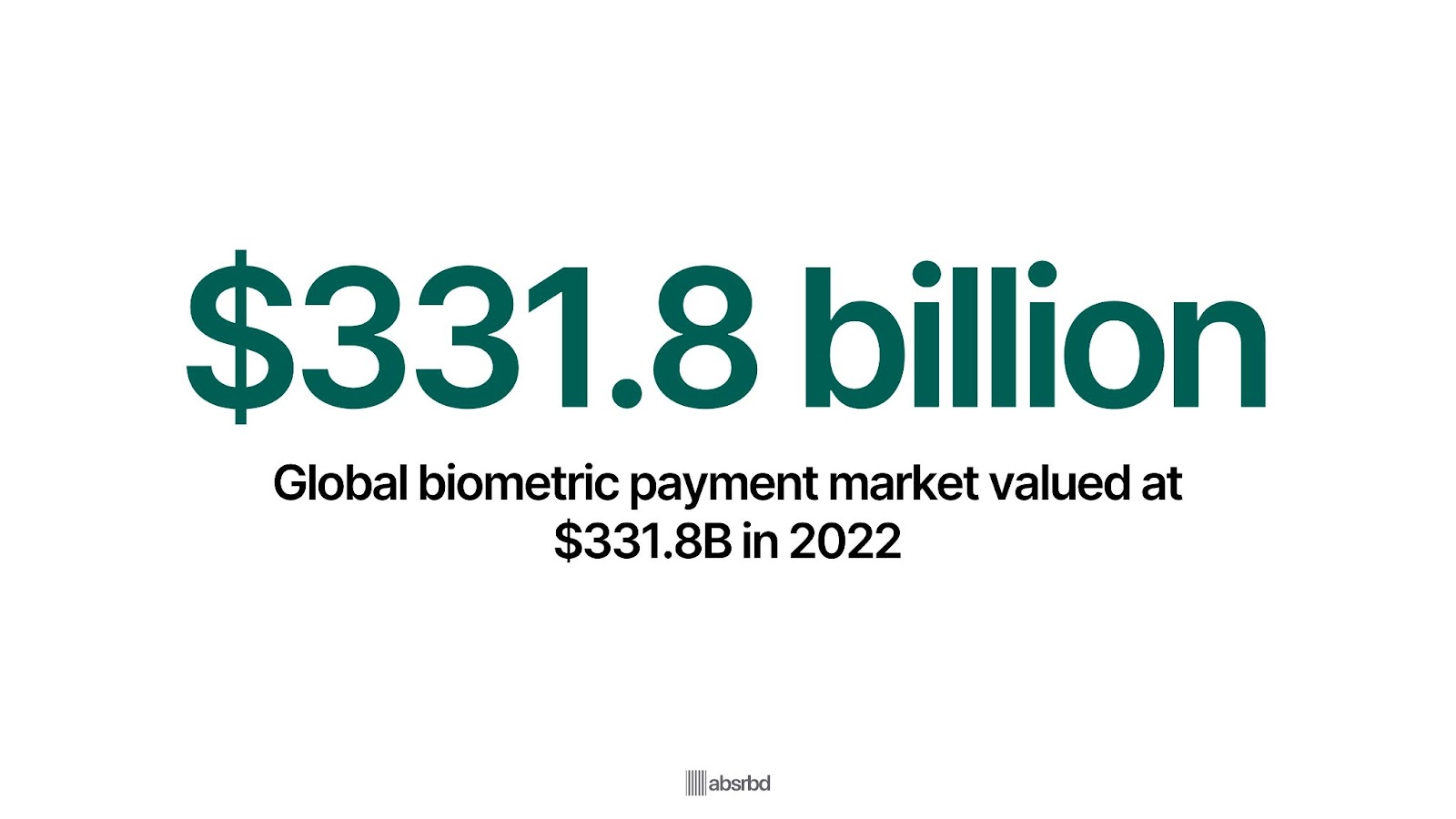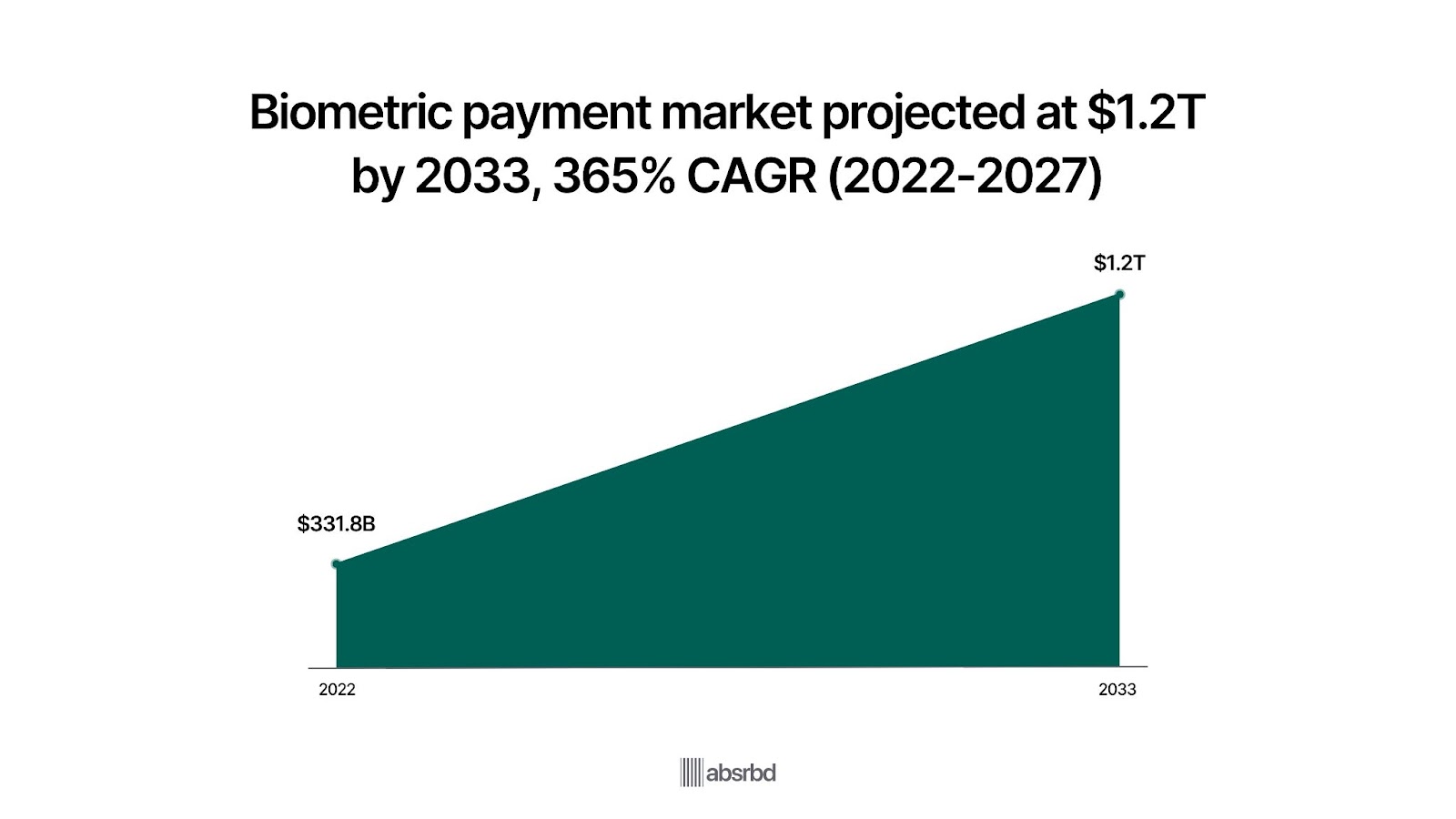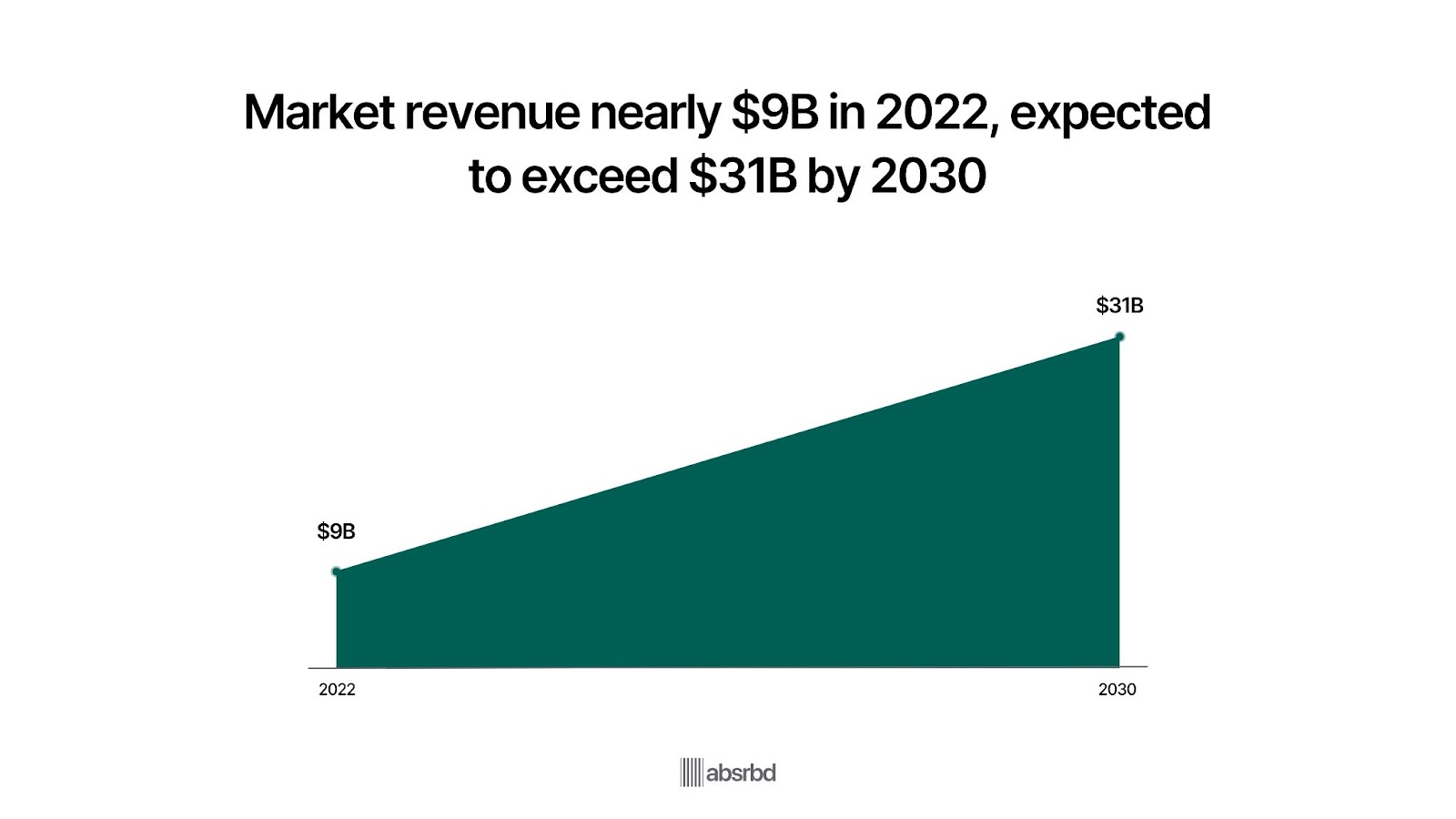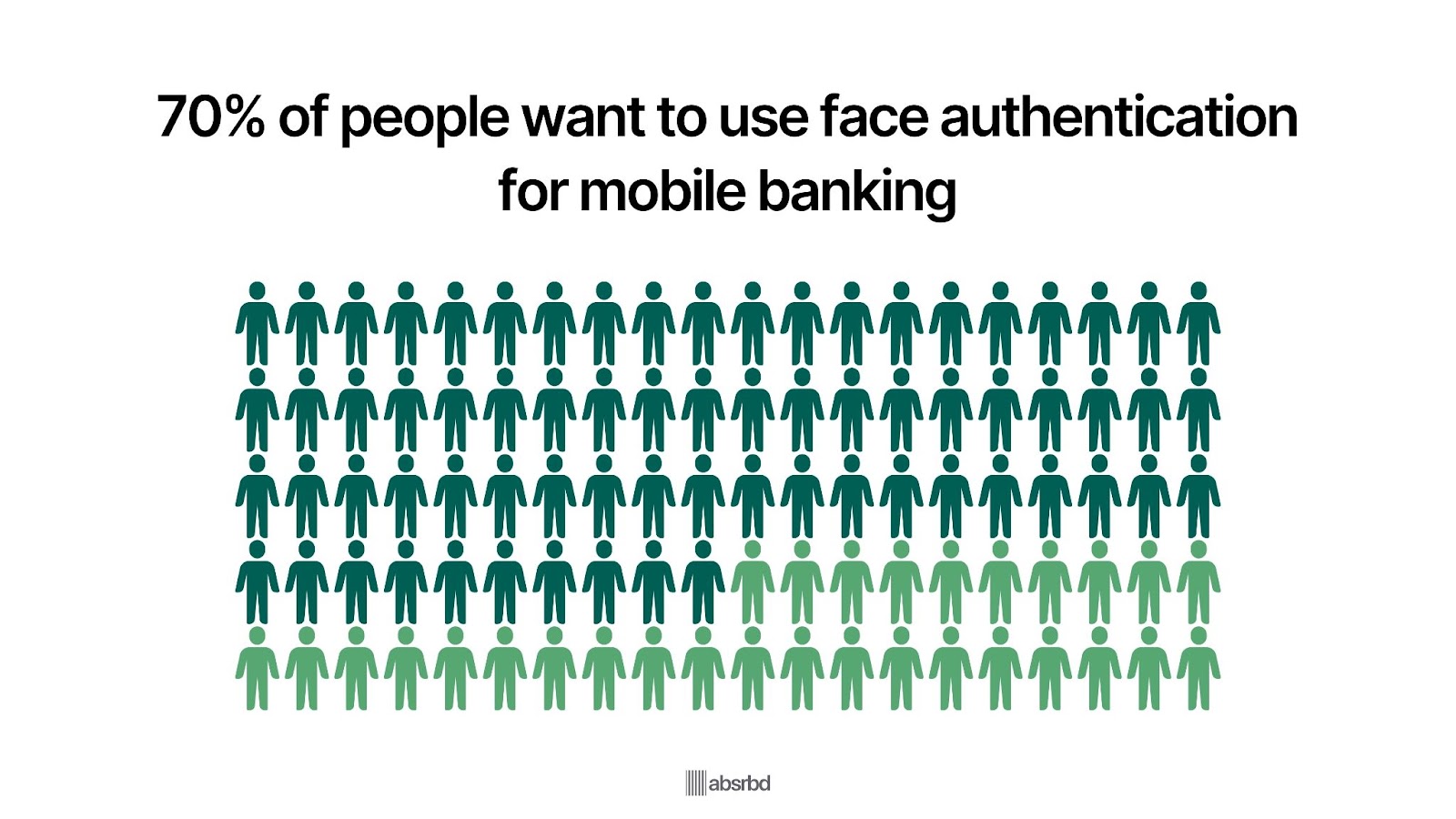Biometric payments are transforming the financial space, with the market projected to reach $1.2 trillion by 2033, growing at a staggering 365% CAGR.
As internet fraud and cyber threats continue to rise, businesses and consumers alike are turning to biometric solutions—fingerprints, face, and iris scans—to safeguard sensitive data.
This article dives deep into the trends and statistics driving the biometric payment revolution, offering insights into its future impact on finance and security.
Data Sources and Methodology
This article combines open-access resources and proprietary data to present accurate, up-to-date statistics and relevant developments in the Money Service Business.
Our methodology involves:
- Aggregating data from government databases, industry reports, and academic publications
- Incorporating exclusive insights from leading industry providers
- Regular updates to reflect the latest information
Key data providers include:
While we strive for accuracy, occurrences in the MaaS market are shifting rapidly.
These statistics reflect current patterns and should not be considered permanent facts.
Key Takeaways
- It is projected to reach $1.2 trillion by 2033, growing at a CAGR of 365% from 2022 to 2027
- The market generated nearly $9 billion in revenue in 2022 and is expected to exceed $31 billion by 2030.
- Over 75% of Americans have utilized biometric technologies like fingerprint scanning and face recognition.
- The number of users of software-based facial recognition for payments will exceed 1.4 billion globally by 2025
- 137 out of 194 member nations of the United Nations have enacted data protection laws, many of which include specific rules for biometric data.
- 86% of consumers expressed concern about data collection practices, with 40% not trusting companies to use their data ethically.
- JPMorgan Chase reported a 20% reduction in fraud cases after implementing biometric authentication for mobile banking in 2022.
- Emerging markets in Asia-Pacific and Latin America offer promising growth prospects for biometric payment systems.
Overview of Biometric Payment Statistics
Biometric payments emerged in the early 2010s, driven by advancements in biometric technology and increasing concerns over security.
It refers to the use of unique biological traits, such as fingerprints, facial recognition, voice recognition or iris scans, to authenticate and authorize financial transactions.
Since its inception, biometric payments have developed tremendously, with major milestones including the integration of webcam and fingerprint sensors in smartphones and the widespread adoption of facial recognition technology by financial institutions and digital platforms like Neobanks and digital wallets.
Today, the biometric payment market is characterized by rapid expansion and remodeling, with a projected value of $1.2 trillion by 2033, growing at a CAGR of 365% from 2022 to 2033. (Juniper Research)
Major players include Mastercard, Visa, Apple, Google and Alibaba, while the rising concerns over cybersecurity and identity theft continue to shape its trajectory.
With an $8.4 billion market value in 2023 and strong growth projections, biometric payments are crucial for enhancing transaction security and user experience, focusing on financial institutions, technology providers, and regulators. (Allied Market Research)
Key Statistics
- The global biometric payment market was valued at $331.8billion in 2022. (Juniper Research)

- It is projected to reach $1.2 trillion by 2033, growing at a CAGR of 365% from 2022 to 2027. (Juniper Research)

- The market generated nearly $9 billion in revenue in 2022 and is expected to exceed $31 billion by 2030. (Statista)

- 81% of consumers see biometrics as a more secure method of identity verification. (iProov)

- 70% of people surveyed by iProov use or would like to use face authentication for mobile banking.

- Over 75% of Americans have utilized biometric technologies like fingerprint scanning and face recognition. (Coolest Gadgets)

- More than half (58%) of GenZ and 55% of millennials have used biometric payments, compared to 24% of Gen X and under 10% of baby boomers. (Kiosk Marketplace)

Key Trends Driving the Biometric Payment Sector
These trends shape the trajectory of this innovative authentication method redefining trust in the digital economy:
Biometric Payment Cards to Reach $15.4 trillion by 2032
The biometric payment card market size was valued at $144.25 billion in 2023 and is projected to reach $15.4 trillion by 2032, growing at a remarkable CAGR of 68.8% from 2024 to 2032. (Allied Market Research)

Biometric payment cards use fingerprint recognition, iris recognition, or facial recognition to verify the cardholder's identity before authorizing a transaction.
These cards are increasingly being implemented in sectors such as finance, government, and corporate security to mitigate fraud and enhance user experience.
Contactless Payments Transactions To Reach $10 trillion By 2027
The COVID-19 pandemic has accelerated the shift towards contactless payments, including biometric options.
According to a report by Juniper Research, the number of users of software-based facial recognition for payments will exceed 1.4 billion globally by 2025, compared to just 671 million in 2020.
A new study also found that the value of contactless payment transactions will reach $10 trillion globally by 2027; from $4.6 trillion in 2022. (Juniper Research)
Studies predict that by 2027, nearly all smartphones will have NFC capabilities by 2027, making contactless payments through mobile wallets incredibly convenient. (digipay)
The shift towards contactless payment methods, driven by consumer demand for faster and more convenient transactions, presents a substantial growth prospect for the biometric payment market.
Growing concerns over security and fraud prevention
As digital payments increase, so do concerns about security.
Biometric payments are seen as a more secure alternative to traditional methods.
A study by Visa found that 86% of consumers are interested in using biometrics to verify identity or make payments.
Biometric authentication quickly validates a customer's identity through a simple fingerprint or face scan, reducing transaction times and amplifying the overall customer experience.
For example, BBVA bank in Mexico has implemented fingerprint authentication for cash withdrawals at ATMs, reducing fraud risks associated with card skimming.
Multimodal Biometrics Market to Reach $84.5 billion By 2029
Combining multiple biometric factors (e.g., face + voice) is becoming more common for upgraded security.
A report by MarketsandMarkets projects the multimodal biometrics market to grow from $47.2 billion in 2024 to $84.5 billion by 2029, growing at a CAGR of 12.3% through the forecast period.
The increasing integration of biometrics in consumer electronics is fuelling the growth of the biometric system market.
Example: Mastercard's Identity Check Mobile uses a combination of facial recognition and fingerprint scanning for secure online purchases.
Integration of Biometrics in Mobile Payment Apps and Digital Wallets
Major mobile payment providers are increasingly incorporating biometric authentication. In 2020, the global biometric authentication and identification market was valued at over $3.5 billion, with the most valuable end users being government bodies and border management bodies. (Statista)
By 2026, the global authentication and identification market is forecast to reach nearly $8.8 billion, with banking and financial institutions' end users exceeding $2 billion. (Statista)
With occurrences showing a shift towards alternative payment methods and the dominance of mobile wallets, the future of digital wallets looks promising in providing consumers with efficient payment solutions.
For example, Apple Pay and Google Pay both use fingerprint or facial recognition for transaction authorization on supported devices.
Biometric ID Systems to Provide Access to 1 billion Unbanked People by 2025.
Biometric payments are on the rise in developing countries, especially in areas with low banking penetration.
The World Bank estimates that biometric ID systems could help provide access to financial services for up to 1 billion previously unbanked people by 2025.
Example: In India, the Aadhaar biometric ID system has been linked to bank accounts, allowing for direct benefit transfers and biometric-authenticated payments.
Key Challenges Facing the Biometric Payment Sector
AS the biometric payment system evolves, it is faced with these hurdles:
Technological Limitations and Accuracy Issues
One major challenge with biometric authentication in payment transactions is ensuring the technology's accuracy and reliability.
A 2019 study by the National Institute of Standards and Technology (NIST) found that facial recognition algorithms often have higher error rates for certain demographic groups, with African American and Asian faces showing 10 to 100 times more false positives compared to Caucasian faces.
"We found empirical evidence for demographic differentials in the majority of the face recognition algorithms we studied," said Patrick Grother, a NIST computer scientist. Biometric systems can also face issues like incorrect fingerprint readings or environmental factors affecting facial recognition.
To address these issues, organizations must invest in well-tested and validated biometric technologies.
Regulatory Compliance and Legal Challenges
Regulatory compliance and data protection present serious challenges for the biometric payment sector.
Organizations must navigate complex regulations, such as the General Data Protection Regulation (GDPR) in the EU and the California Consumer Privacy Act (CCPA) in the U.S.
As of February 2024, 137 out of 194 countries under the United Nations have enacted data protection laws, many of which include specific rules for biometric data (UNCTAD). A 2015 Deloitte report found that 79% of organizations find compliance with biometric data regulations "very challenging" or "extremely challenging."
The complexity of compliance is also reflected in rising fines; in 2022, the Italian data protection authority fined a company €20 million for the improper use of biometric data in its employee attendance system (EDPB).
In the U.S., the Illinois Biometric Information Privacy Act (BIPA) has resulted in numerous lawsuits, including Facebook's $650 million settlement in 2021 (ABA).
Privacy and Data Protection Concerns
Privacy remains a serious concern for consumers and regulators alike when it comes to biometric data.
According to a 2023 survey by KPMG, 86% of consumers expressed concern about data collection practices, with 40% not trusting companies to use their data ethically.
Example: The European Union's General Data Protection Regulation (GDPR) classifies biometric data as sensitive personal data, requiring strict protection measures. Companies operating in the EU must obtain explicit consent to collect and process biometric data.
Infrastructure and Implementation Costs
Implementing biometric payment systems can be expensive, particularly for smaller businesses or in developing regions.
The global biometric system market size is expected to reach $84.5 billion by 2029 by 2029, according to MarketsandMarkets, indicating substantial investment requirements.
The Indian government's Aadhaar biometric ID system, while successful, has cost over $11 billion to implement as of 2021.
User Adoption and Trust
Despite the potential benefits, some consumers remain hesitant to adopt biometric payment methods.
Some individuals may be reluctant to provide their biometric data due to concerns about privacy or distrust in the technology.
Others may find the process of biometric authentication cumbersome or time-consuming.
A 2023 survey by Entrust found that 89% of respondents indicated they still have a preference to use physical credit or debit cards.
Some banks have faced pushback when implementing voice recognition for telephone banking, with customers expressing concerns about privacy and the potential for voice imitation.
Accessibility and Inclusion
Biometric payments heavily rely on the availability and functionality of biometric sensors, which can pose challenges for individuals with disabilities or those who lack access to devices with biometric capabilities.
To address these concerns, payment providers should offer alternative authentication methods, such as PINs or passwords, to ensure inclusivity and accessibility for all users.
Security and Spoofing Risks
While biometrics offer robust security, they are not foolproof and can be vulnerable to sophisticated attacks.
A 2022 report by Cisco found that 35% of organizations experienced a biometric data breach in the past year.
Example: In 2019, researchers demonstrated how they could bypass smartphone facial recognition systems using 3D-printed head models. (Forbes)
Emerging Opportunities in the Biometric Payment Market
The global biometric payment market is experiencing rapid growth and transformation, driven by advancements in technology and changing consumer preferences.
Here are some key emerging opportunities in this sector, backed by statistics and examples:
Mobile biometric payments:
The rise of smartphones with built-in biometric sensors is creating a vital opportunity for mobile biometric payments.
According to a report by Juniper Research, the number of users of software-based facial recognition to secure payments will exceed 1.4 billion globally by 2025, compared to just 671 million in 2020.
The same report predicts that the value of facial recognition payments will reach $124 billion by 2025, up from $28 billion in 2020.
Contactless Biometric Cards:
The COVID-19 pandemic has accelerated the demand for contactless payments, creating an opportunity for biometric payment cards.
A study by Juniper Research found that global payment card shipment revenue for technology companies will reach $11.7 billion in 2026, from $9.7 billion in 2022.
According to a survey by Visa, 46% of consumers think using a biometric card is more secure than a standard chip card.
Thales Group has developed a biometric payment card that includes a fingerprint sensor, allowing users to authenticate payments without touching a PIN pad.
Voice-Based Payments:
With the increasing popularity of voice assistants, voice-based biometric payments are emerging as a convenient option.
Juniper Research forecasts that the number of voice assistant users will reach 8 billion by 2023.
Juniper Research has found that eCommerce transaction values via voice assistants will reach $19.4 billion by 2023, rising from just $4.6 billion in 2021.
Amazon's Alexa allows users to make voice-activated purchases, and they're working on voice authentication to increase security.
Behavioral Biometrics
This emerging field analyzes unique patterns in human activity to authenticate users, offering a less intrusive form of biometric authentication.
According to MarketsandMarkets, the behavioral biometrics market is expected to grow from $675 million in 2017 to $2.5 billion by 2023 at a CAGR of 23.7%.
Royal Bank of Scotland has implemented behavioral biometrics in its banking app to analyze how customers interact with their devices, including typing speed and swipe patterns.
Multimodal Biometric Systems
Combining multiple biometric factors can boost security and accuracy, creating opportunities for more robust payment authentication systems.
IDEMIA's MorphoWave Compact uses a combination of fingerprint, vein pattern, and hand geometry recognition for secure access control, which could be adapted for payment systems.
Biometric ATMs
The integration of biometric technology into ATMs is creating new opportunities for secure cash withdrawals without cards.
According to The Business Research Company, the number of biometric ATMs worldwide is expected to increase at a CAGR of 5.4% between 2023 and 2028.
In India, many banks have introduced biometric ATMs that use Aadhaar (the national biometric ID system) for authentication, allowing customers to withdraw cash without cards.
Emerging Markets Offer Promising Growth Prospects
Emerging markets in Asia-Pacific and Latin America offer promising growth prospects for biometric payment systems despite the considerable adoption observed in developed regions such as North America and Europe.
These regions are currently undergoing momentous changes like urbanization, increased smartphone usage, and digital payment solutions.
Organizations can capitalize on these opportunities by extending their reach in emerging markets and offering to meet the specific demands of the local population.
Impact on Stakeholders
The implementation of biometric payment systems has meaningful impacts on various stakeholders. Here's a concise overview of these impacts:
Consumers
- Increased convenience: Faster, frictionless transactions
- Enhanced security: Reduced risk of card theft or fraud
- Privacy concerns: Worries about biometric data storage and use
- Accessibility issues: Potential difficulties for those with certain disabilities
A 2023 Visa survey found that 70% of consumers believe biometrics are easier to use than passwords, and 46% think biometric authentication is more secure than traditional methods.
Financial Institutions
- Improved fraud prevention: More accurate user authentication
- Cost savings: Reduced need for physical cards and PINs
- Implementation challenges: High initial costs for infrastructure upgrades
- Regulatory compliance: Need to adhere to strict data protection laws
JPMorgan Chase reported a 20% reduction in fraud cases after implementing biometric authentication for mobile banking in 2022.
Merchants
- Faster transactions: Increased throughput at point of sale
- Reduced liability: Lower risk of fraudulent transactions
- Integration costs: Expenses for new biometric-capable payment terminals
- Customer trust: Need to ensure transparent data handling practices
A 2023 Juniper Research study predicts that biometric authentication will secure $5.6 trillion in payment transactions by 2026, up from $404 billion in 2022.
Payment Processors
- New revenue streams: Offering biometric authentication services
- Technical challenges: Ensuring interoperability across different biometric systems
- Data management: Responsibility for secure storage and processing of biometric data
- Competitive advantage: Early adopters may gain market share
Mastercard's "Identity Check Mobile" uses biometrics for secure online purchases and has been adopted by over 60% of its cardholders as of 2023.
Regulators
- Policy development: Creating frameworks for biometric data protection
- Enforcement challenges: Monitoring compliance across borders
- Balancing restructuring and protection: Encouraging technological advancement while safeguarding consumer rights
As of 2023, over 100 countries have enacted data protection laws, many specifically addressing biometric data. (UNCTAD)
Technology Providers
- Market growth: Expanding opportunities in biometric hardware and software
- R&D investment: Continuous improvement of accuracy and security
- Liability concerns: Potential legal issues if systems are compromised
The global biometrics market is projected to grow from $42.9 billion in 2022 to $82.9 billion by 2027 at a CAGR of 14.1% (MarketsandMarkets, 2022).
Conclusion
Biometric payments are improving financial technology, offering increased security, convenience, and efficiency across transactions.
As the technology matures, it's changing retail purchases and banking operations.
The market is expanding due to the growth of biometric payment cards, integration with mobile wallets and IoT devices, adoption in emerging markets, and demand for secure, convenient, contactless payments.
However, this advancement faces challenges, including privacy concerns, regulatory hurdles, and technological limitations.
Success hinges on balancing transformation with user trust, implementing robust security, and navigating complex regulations.
As industry stakeholders collaborate to address these issues, biometric payments are set to play a central role in global finance, potentially boosting our relationship with money and personal identification.
The future of payments is at our fingertips – literally.
Frequently Asked Questions
What's new about biometric payment technology?
The developers of biometric authentication methods are creating some completely new modes of authentication to include: tongue scans, heartbeat profiles, keystroke profiles and pulse-response profiles. (DiVA portal)





